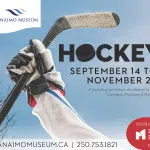
B.C. study shows sustainable management of salmon fishery before colonization
VANCOUVER — A new study confirms what Michelle George’s family has told her about their Tsleil-Waututh ancestors’ fishing practices of targeting male salmon both for their meat and to sustain the fishery.
They knew that if more “females make it upstream to spawn, the circle of life will have a better chance of succeeding,” said George, a technical and cultural specialist with the Tsleil-Waututh Nation on the shores of Burrard Inlet in North Vancouver.
The study published Wednesday in the journal Scientific Reportsexamined chum salmon bones dating from between 400 BC and AD 1200 from four archeological sites around the inlet.
It then used a polymerase chain reaction or PCR test to screen for the Y chromosome, which would indicate the fish was male.


